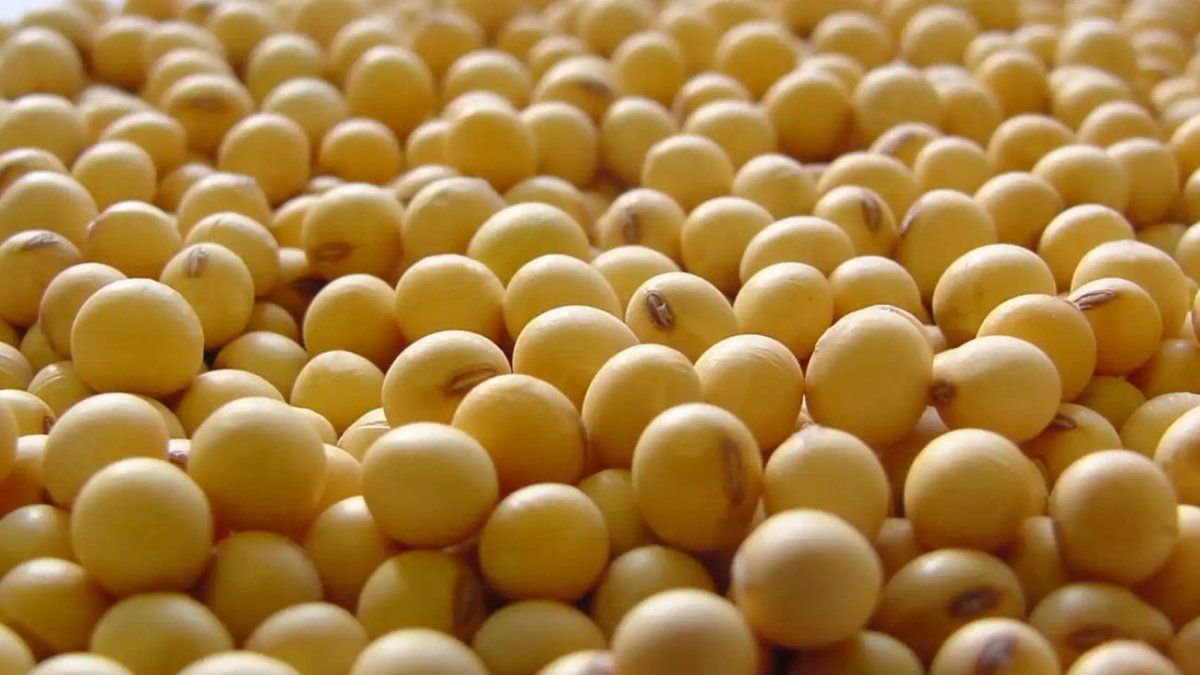It takes place this Thursday, from 12, in the Rosario Stock Exchange the 35th edition of the Auction of the first batch of soybeans of the 2022/2023 campaign. The president of the Chamber of the Oil Industry of the Argentine Republic (CIARA), Gustavo Idígoras, participates in this traditional act in the city of Santa Fe. And this year, the event comes at a very special moment, due to the validity of the soybean/agro dollar and after two days of zero income of dollars to the Central Bank (BCRA) within the framework of this export increase program.
He first batch of soybeans it was produced by La Constancia Agro SA and was listed on the Rosario Stock Exchange on March 16. The batch of 35,530 kilos is of the Credenz 5907 variety. It will be auctioned this Thursday and Idígoras, as a representative of the grain sector, will speak and, surely, will announce the start of a return to normality in the grain liquidation process.
And it is that the latter was marked these days by a strong controversy in the framework of the resignation of the chief of advisors to the presidency, Antonio Aracre. It was said that the grain companies had suspended the liquidation due to the proposal of the now ex-official to implement a 60% devaluation and exchange rate splitting.
Aracre would have presented his plan to the president, Alberto Fernández, which was going to be analyzed by the economic team, but before it was leaked to the press and, from there, an exchange rate run was unleashed that caused the exchange rates to jump alternatives in recent days.
In this context, it is grain sales stopped. In a simple analysis, it could be concluded that, given the rise in parallel exchange rates, producers did not want to liquidate until they saw the panorama more clearly. And it is that many analysts related to the field say that the sector considers a dollar at $300 very cheap and seeks an improvement in the price.
Agricultural dollar: a price that could be improved
As the economist Federico Glustein pointed out to Ambit A few days ago, it would have been advisable, in order to guarantee a longer duration of a successful liquidation process, to establish a dollar adjustment mechanism that was differentiated from the soybean dollar program, taking into account the long duration of the program and the current volatility of the exchange rates, as well as the inflationary variable. The sector would aspire at this moment to a dollar of $340according to the sources.
“It would be logical to think that the more noise with the dollar, the more producers back off and all rumors of resignation make people worry, but what is affecting the most is the climate issue,” says a source close to the grain sector. . Thus, he points out that, given the severity of this year’s droughtthe production of grains “is scarce and of poor quality”, which is why the producers take more care of it than in other campaigns.
In the same sense, soybeans comment that “it is such a rare harvest that it started even earlier than other years, with poor results and in a context in which the international price is not good.” In fact, only this Monday the price of soybeans began to improve in the Chicago market and this Wednesday reaches US$549 per ton.
Unemployment, an undeniable brake
However, an undeniable and palpable fact is what really stopped the sales this Wednesday and brought them to zero. It was a strike that took place since Monday in the cereal ports and the Waterway, called by the Maritime, Port and Naval Industry Federation (Fempinra), which led by Juan Carlos Schmid.
The main waterway of the Paraná and the main grain ports of Argentina remained inactive and the stoppage is due to non-compliance with the repeal of Decree 870/2018, which provided for the use of a single terminal in the Port of Buenos Aires, and claims regarding the application of Income Tax. The issue worsened on Wednesday because the terminals of the Port of Buenos Aires, South Dock and in the Zarate-Campana corridor.
“Unemployment was the real reason for the lack of settlements these days. It gives the impression that people are not aware of the effects that issues that we experience from time to time, such as strikes or pickets, have on economic activity,” he told Ambit a source related to the producers. And he assured that the sector agreed to reload orders between this Thursday and Friday. In fact, CIARA presented a schedule to the Government of liquidations for these two days.
CIARA announced that dollars will enter the BCRA
And the confirmation of this intention was that, on Wednesday, CIARA launched a official statement in which he informed that, “in relation to the implementation of Decree 194/23 on the agricultural dollar (soy), that the partner companies have entered foreign currency for 1.5 billion dollars since the beginning of the month, of which one billion correspond to the soybean dollar, and entered as pre-financing and export advances as usually happens”.
In the same message they stated that “soybean marketing is delayed for various reasonsbut above all for climatic reasons, therefore, the soybean purchase program and registration of export contracts for soybeans and derivative products continues to be active and the companies will be working until May 31 as established in the aforementioned decree” .
In short, what is being seen in the soybean dollar framework is a poor result due to these circumstances, but, in the sector, they trust that now “it will start”with the start of the lot liquidation campaign that begins this Thursday and the lifting of the strike.
What can be seen in full magnitude, from now on, is how much the other factors related to the price of the dollar, the exchange rate policy and the elections have an impact on the grain campaign this year, already hit by the weather and the global context.
Source: Ambito




